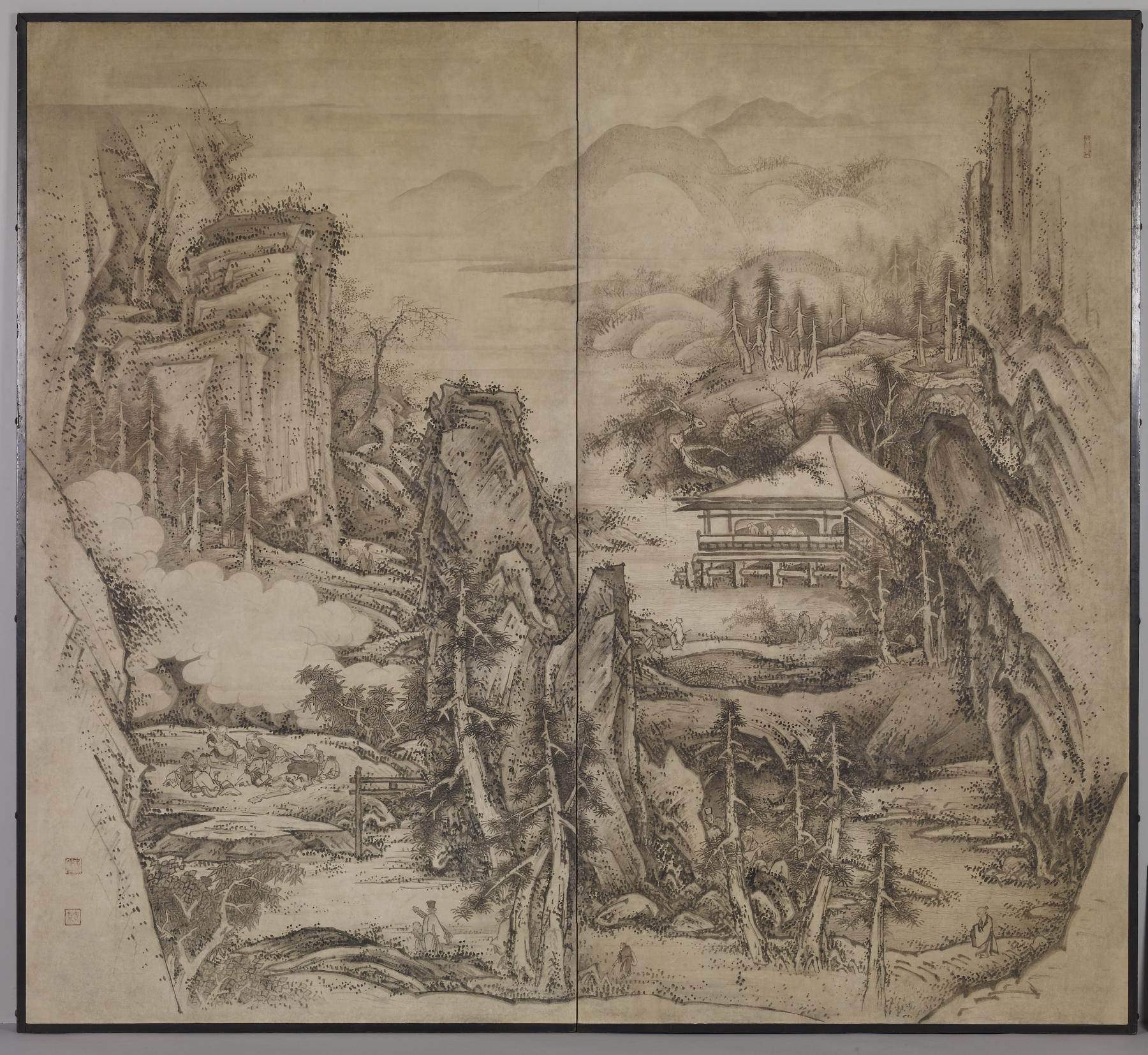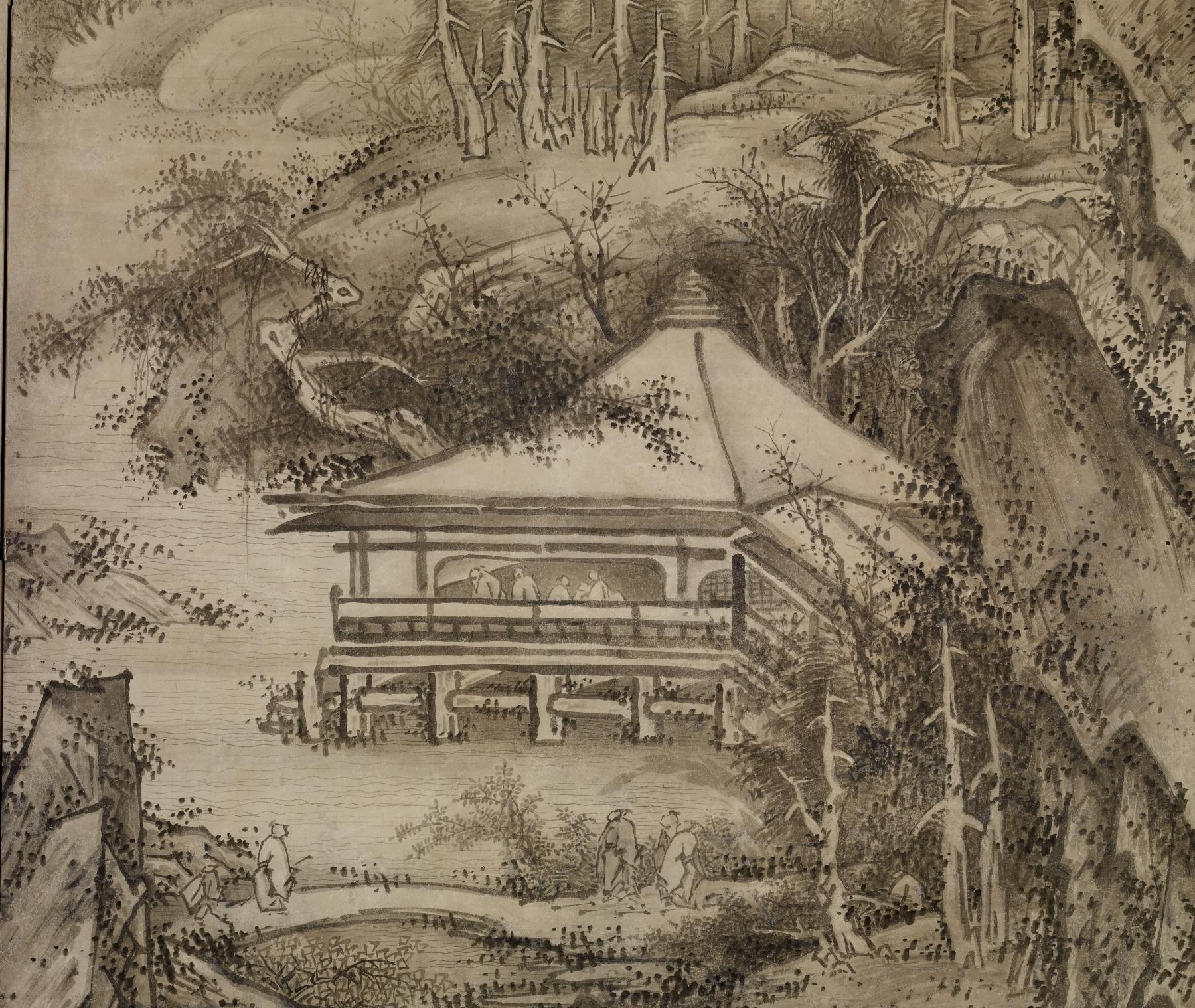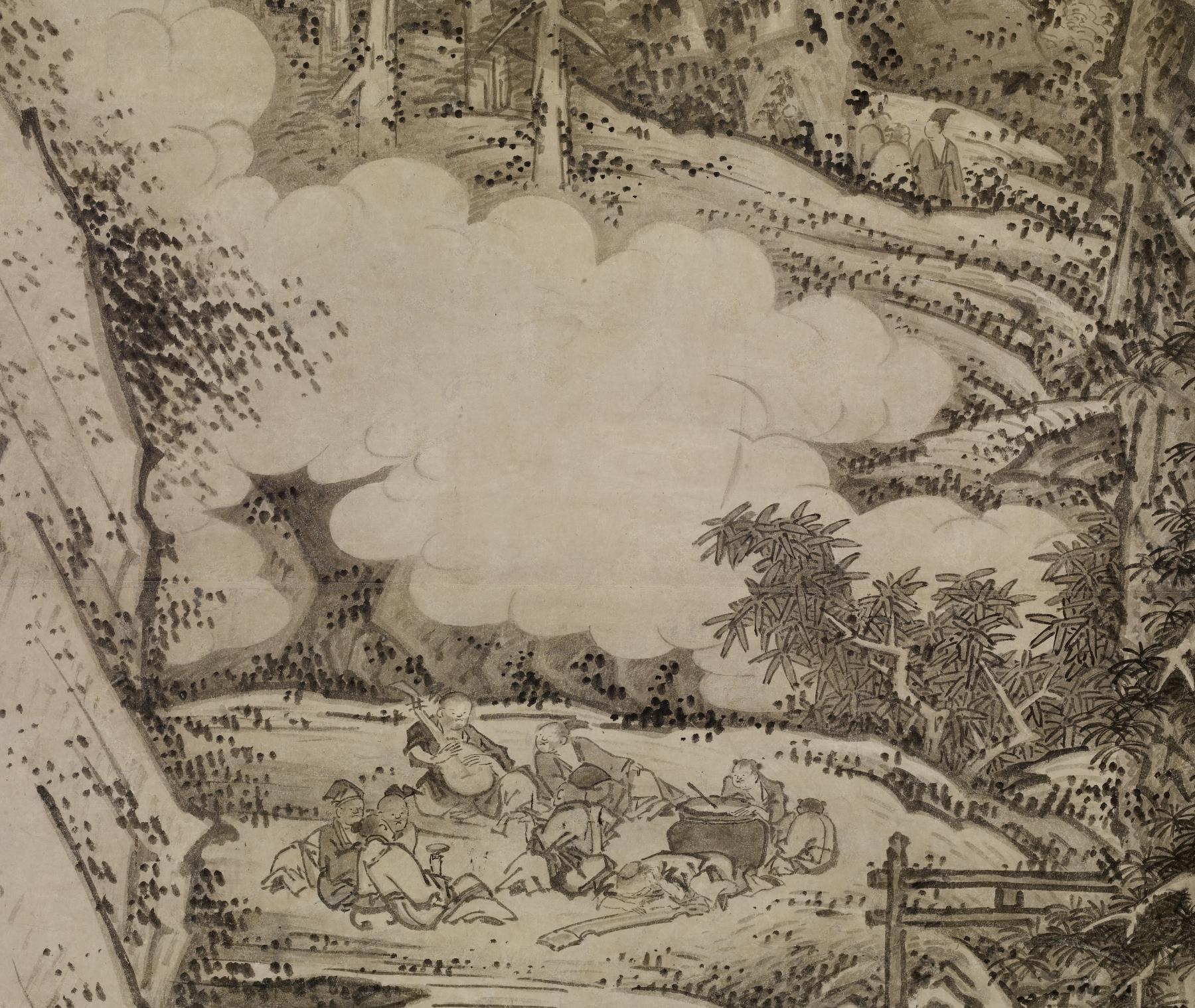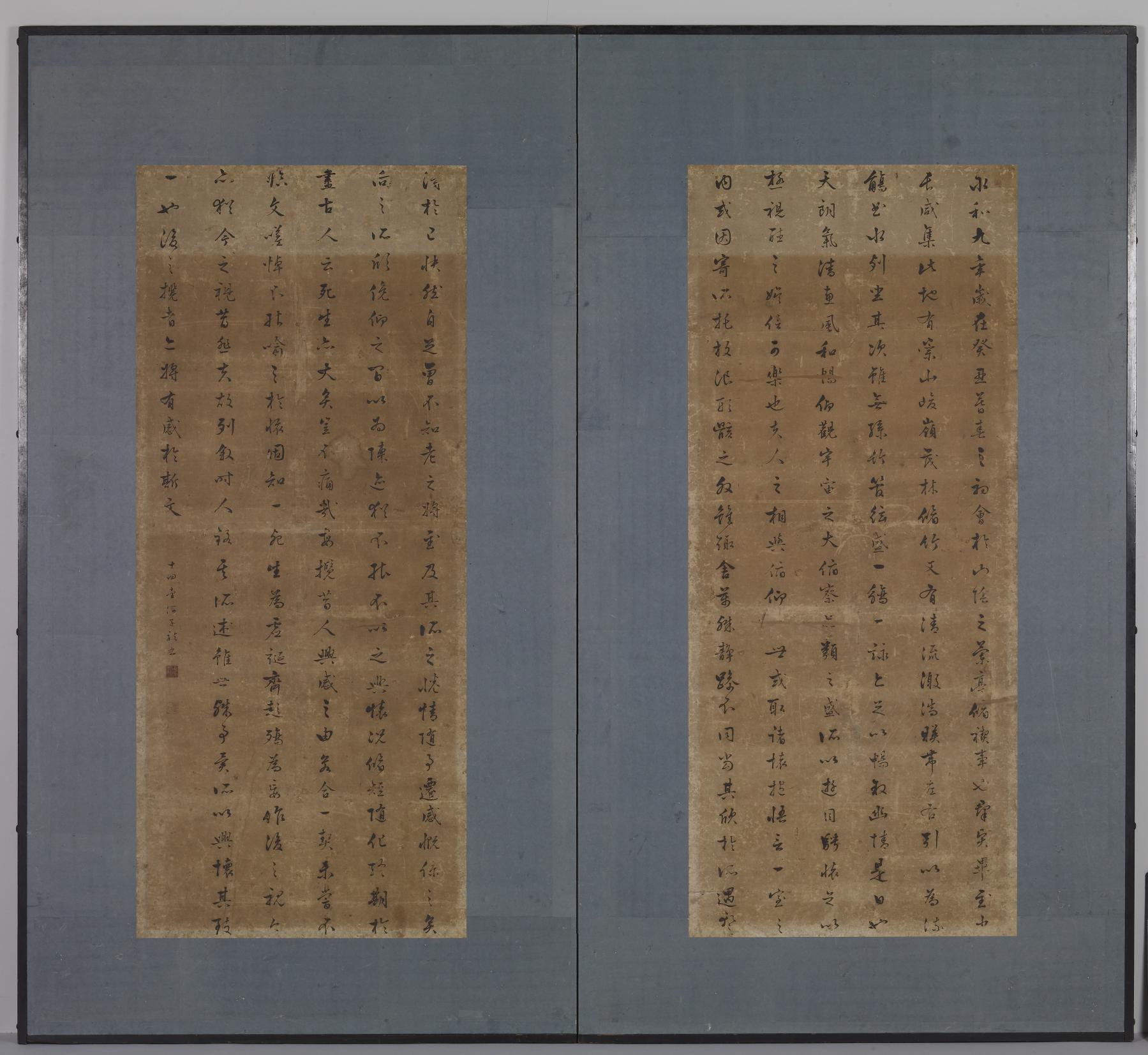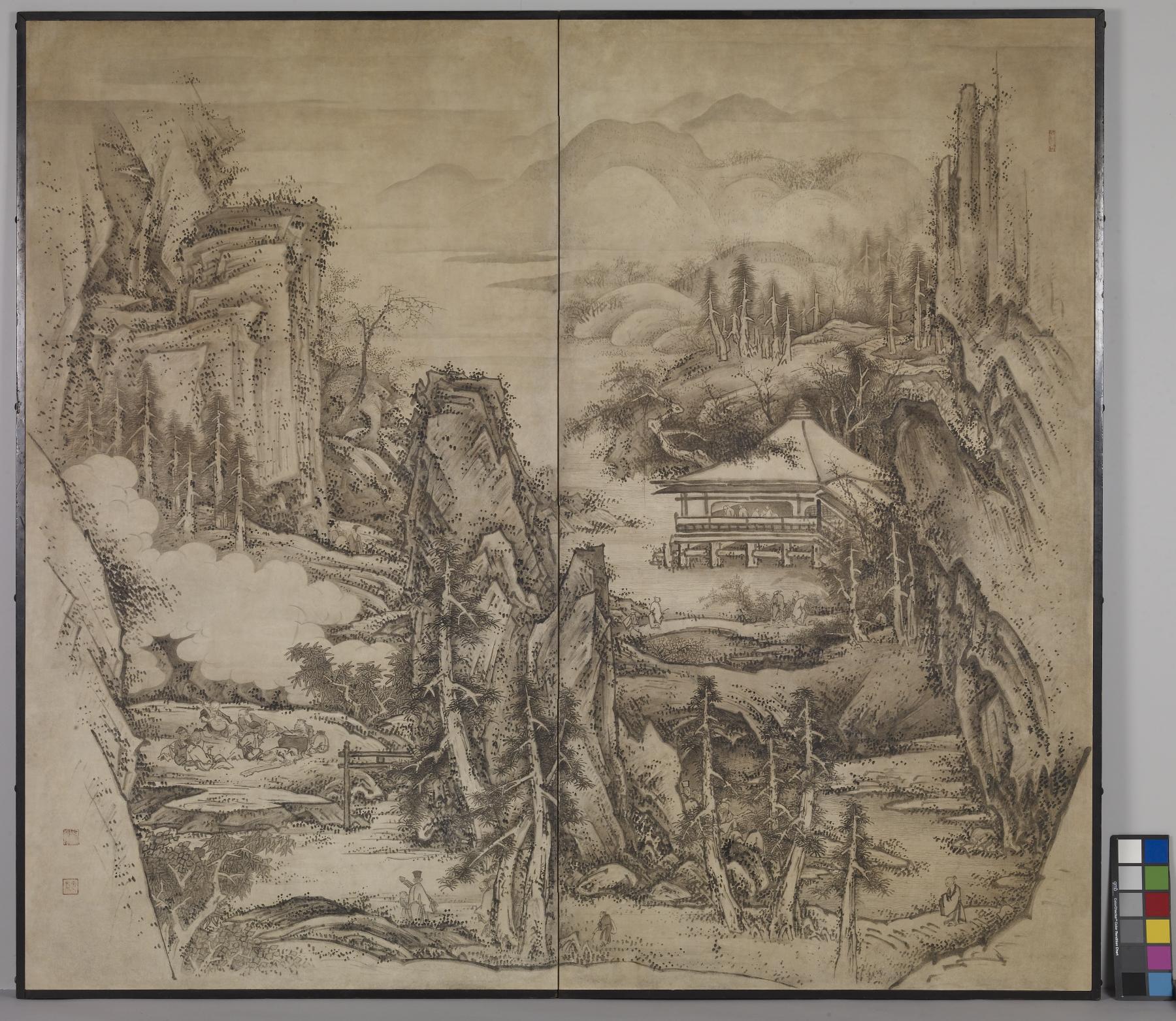Lan-ting Pavilion
(Japan and Korea )
Soga Shohaku was born Miura Sakonjiro in Kyoto, where he thrived as an eccentric artist drawing on the long history of Japanese painting. His family owned a store in the town called Tanbaya, where he may have first gained exposure to the potential of painting as a means to make a living. He studied early on with Kano school artist Takada Keiho. In this training he must have been introduced to the wide range of Chinese traditional subject matter that would come to dominate his paintings. His painting style is what distinguishes him most. His vigorous use of the brush and rich black ink lead his works to appear quite modern even as they address historical themes. Shohaku was labeled early on as a "mad" painter because of the frenetic quality of his work. From the end of his life he was generally dismissed as an outlier in the development of Japanese painting, until he was featured in an article entitled Lineage of the Bizarre in the Journal Bijutsu Techo. From that point forward he has become one of the most sought-after painters of the eighteenth century. His combined meticulousness, calligraphic linear flow, and understanding of the properties of ink distinguish his work as the product of a true individualist active in a period of many rather restrictive schools of painting.
This work is the only surviving example of Shohaku painting the subject of the Lan-ting, or Orchid Pavilion Gathering. In this traditional Chinese theme we are presented the image of the pavilion high in the mountains near Shaoxing in Zhejiang Province in which the great Chinese classical calligrapher Wang Xizhi penned the preface to an anthology of poems written on the third day of the third month of a year around 400 CE.
Provenance
Provenance (from the French provenir, 'to come from/forth') is the chronology of the ownership, custody, or location of a historical object. Learn more about provenance at the Walters.
Acquired by Matsumoto Kikuo, Kyoto, Japan, before 2011; purchased by James Freeman, Bangkok, 2011; purchased by Walters Art Museum, 2013.
Geographies
Japan, Kyoto (Place of Origin)
Measurements
H: 67 1/2 × W: 73 13/16 × D: 3/4 in. (171.5 × 187.5 × 1.9 cm), Closed H: 67 1/2 × W: 37 × D: 1 7/16 in. (171.5 × 94 × 3.6 cm)
Credit Line
Museum purchase by exchange, 2013
Location in Museum
Not on view
Accession Number
In libraries, galleries, museums, and archives, an accession number is a unique identifier assigned to each object in the collection.
In libraries, galleries, museums, and archives, an accession number is a unique identifier assigned to each object in the collection.
35.308

